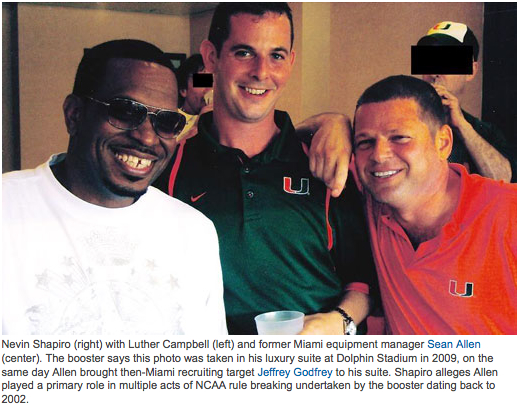The answer, in the big picture, is "probably not much."
I look back to one of the first feature articles I wrote for recruiting, entitled "A Battle for the Hearts and Minds." It's on a site I refuse to link in this blog, but a quick Google search of "battle for the hearts and minds gators" will bring it up if you wish to give it a look.
The piece centers on the Florida-Miami game in 2008, and how many key prospects that both schools were targeting planned to attend the game. Now, keep in mind, there were other recruiting battles that had already concluded (defensive tackle Curtis Porter, for instance, had already picked Miami over Florida. He will compete for the 'Canes on Saturday as a redshirt senior.) I'm also not aware how many of these prospects actually showed up to the Swamp on Sept. 6, 2008, and I have no intention of going back to research it all. However, let's use the 14 prospects featured in the article as a small cross-section of how the recruiting battles between Florida and Miami played out that year.
– Three of the 14 players (DB Ray Ray Armstrong, DE Dyron Dye and OL Jared Wheeler) signed with Miami, although it should be noted that Wheeler didn't have the option to attend UF.
– Three prospects also elected to attend Florida: LB Jon Bostic, WR Andre Debose and OL Xavier Nixon.
– Of the remaining eight players, two went to Georgia (TE Orson Charles and LB Jarvis Jones), and one each went to Alabama (RB Trent Richardson), Michigan (QB Denard Robinson), Minnesota (CB Michael Carter), North Carolina (WR Jheranie Boyd), Rutgers (DL Antwan Lowery) and South Florida (DE Ryne Giddins).
So, despite the big (although far from pretty) win by Florida, the Gators didn't appear to get any major boost from the victory. Bostic had long favored Florida. Nixon was on his official visit that weekend, and the entire experience helped deliver him to Florida, although the Gators had been trending positively before the trip. Andre Debose was sort of all over the map, but his decision seemed to come down to Florida and LSU more than Miami in the end.
A late field goal conversion to cover the spread, ordered by Urban Meyer, didn't help Miami "more than [we] will ever know." However, the loss didn't particularly harm Miami's efforts on the recruiting trail. They signed the No. 15 class in the country according to Rivals, only inking 19 a year after they signed 33. Florida, likewise, was limited on numbers and only brought in 16 that cycle, good for No. 11 in the Rivals team rankings.
In the end, it's relationships that ultimately matter in recruiting. Florida has one of the best assistant coaches in the country as it relates to establishing relationships in Travaris Robinson. The Gators will be fine, regardless of what happens on Saturday. Looking further down the line, winning this game is bigger for the Florida program because they don't want to take a huge step back from 2012. No one expects 11 victories from the Gators again this year. I think most fans would be satisfied with nine wins or more. But this tilt is a key to for Will Muschamp to make that figure happen. Dangerous trips to LSU and South Carolina loom in the distance. Georgia is a tough out in Jacksonville. Florida State will prove a tough test to close out the regular season schedule.
From the Miami perspective, this game is about trying to re-establish themselves on the national scene. A win would potentially provide a huge boost, as the only other marquee game on their slate is an November date in Tallahassee against FSU. If they lose, no big deal. The 'Canes still have a real shot at winning 10 games and competing for the ACC title. But a win ... well, a win could catapult them towards something entirely different.
One thing that strikes me when going back to reading my article from five years ago: I was guilty of propagating the exact same storyline I'm now debunking. I guess I was naive back then. There is a lot hanging on the line for what will likely be the last regular season contest in many years between the two programs – especially in terms of bragging rights for the two fanbases. But the point is, if someone tries to sell you on the idea that the decisions of 20 recruits are hanging in the balance, don't buy. In the end, all this game means to high school recruits is the opportunity to watch a big game in person, and the opportunity to check out some hot girls while they're at it.

